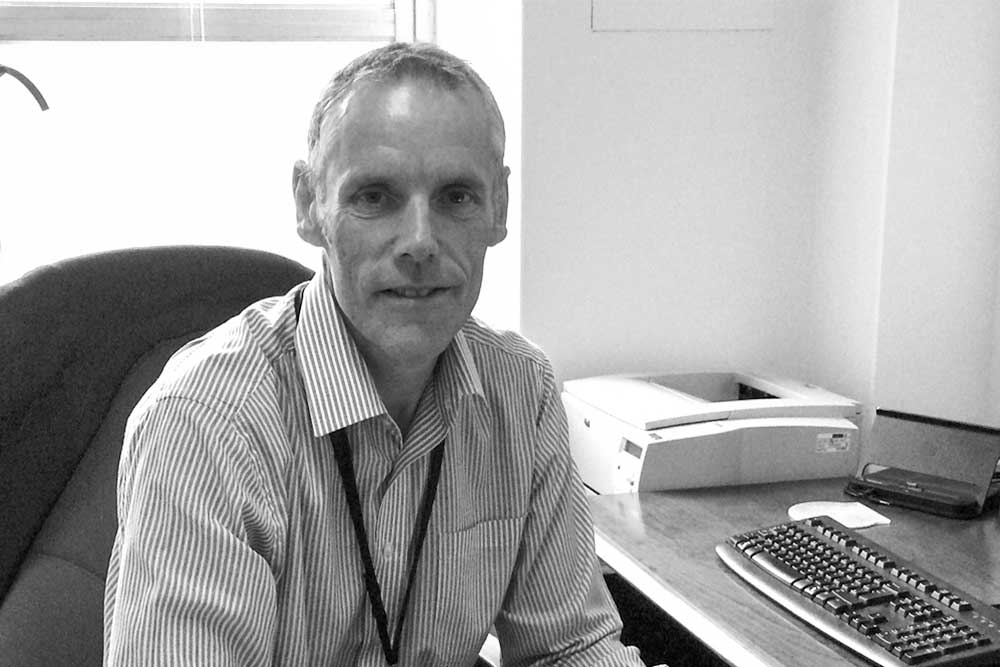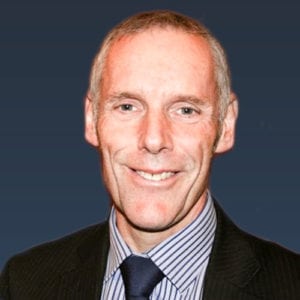Scotland’s eHealth chief is on a mission to reach beyond just the NHS. Everyone, from care workers to local authorities and citizens, must be better engaged to make the most of digital technology, Eddie Turnbull tells Highland Marketing’s Matthew D’Arcy.
Bob Hoskins once played a plumber famous for going far beyond the traditional job description. For Eddie Turnbull, technology leaders too are now on a mission that reaches way beyond the role of maintaining and enhancing the infrastructure that Scotland’s NHS is so dependent on.
A man who has held IT roles in Scottish central government for decades, Turnbull has himself transitioned from a predominantly technical role to become a visionary leader, playing an active part in the shift of IT from back office confines, to the forefront of public service delivery.
As the Scottish government’s head of eHealth, Turnbull is eager to build on solid IT pipework that has been put in place, and deliver benefits not just for NHS organisations, but for social care, for community services and for citizens. And this will mean elevating technology vision, leadership and engagement far beyond the centre and even beyond NHS Scotland’s health boards, to reach communities throughout the country.
“I sit here in an advantageous position”, he explains. “We have a 2020 Vision for Health and Social Care that resonates throughout the health service. We have a dedicated eHealth community in Scotland that takes a collaborative approach in our NHS, and we have coherent strategies around eHealth, rationalisation and convergence.”
“We have an eHealth lead in every health board who is not only an IT manager, but who plays a key strategic role in service planning. They are definitely not just dealing with the plumbing.”
Scotland’s advantage
Genuine engagement has already been central to creating this environment within NHS Scotland, where eHealth leads and others the frontline of clinical delivery are now fully engaged to use technology to deliver the cutting edge of healthcare for Scotland’s patients.
“We are promoting the role of the chief clinical information officer (CCIO),” explains Turnbull. “My gratitude goes out to clinical professionals who have devoted time for the potential for IT in heath. They have served Scotland well for decades. But we have recognised the need for greater formality, so that the CCIOs can dedicate time to work with the eHealth leads to focus on where the greatest clinical benefit can come from the introduction and enhancement of IT. The introduction of digital technology needs to be led by health and care professionals with the full engagement of citizens.”
A growing number of health boards are recognising the criticality of these clinical IT leads, where clinicians’ time is spent on developing and delivering digital health and care strategy, and this is now expanding beyond only hospitals. Turnbull explains: “We have increased the number of clinical advisors, including GPs, acute consultants and nurses, that are part of my team, to work at a national level too, bringing their expertise directly into the eHealth strategy and policy setting process.”
The creation of Scotland’s eHealth Clinical Change Leadership Group has been one important step here, and Turnbull has made considerable effort to support regional collaborations between Scotland’s eHealth communities, where best practice and innovations can be shared. But he recognises that there is still some way to go to bring on board other parts of the care spectrum.
“eHealth still doesn’t have the representation that it could have from the care community,” he says. “We must engage more directly with the social care community. We have worked well up to this point on rudimentary but nonetheless vital functions – how do we do simple things like email each other and share documents? But we really have to think about properly integrating information and, importantly, integrating workflow and therefore services.”
A new domain – reaching out to local authorities
Given its size and potential for uniformity in approach, Scotland is in a far better position than many geographies to achieve this, believes Turnbull. But engagement challenges must be addressed, where local priorities are balanced delicately against the potential for national economies of scale and delivering the most from IT investment.
Scotland’s health boards are able to maximise their investment in IT as a result of collaboratively driven procurements for ‘workhorse’ clinical and administration systems. On the acute side, TrakCare, for example, is being deployed across all health boards in Scotland, with the benefit of achieving significant efficiencies from at-scale procurement and shared deployment. Turnbull believes that GPs too have benefited from the standardisation of having only two suppliers for their main IT systems.
Equally, Turnbull highlights that great synergy can be seen across health boards that are working to address the same core aims and objectives of Scotland’s 2020 Vision, its clinical strategy and the national eHealth strategy. “Every board will have variations in how it delivers – but it is coherent around agreed principles that govern the NHS.” But he recognises there is now need for flexibility if social care is to be successfully connected.
“The challenge is that we can’t be insular,” says Turnbull. “We have to reach out. With health and social care integration, we have 32 local authorities that are now full partners. The domain has changed. We have to get the right structure and also bring in the third sector to a much greater degree.
“My challenge – how to get the right blend of doing things locally, but still having the benefits of ‘joined-up-ness’, of economies of scale, and having information that flows across organisational boundaries.”
For Turnbull this is about a balance of both selling and actively listening – “understanding what people want”. On the local government front, important work has begun to put in place the right structures, with integration joint boards now trying to achieve the right dialogue for the right balance of priorities.
The chance for real engagement – citizens, health and care workers, and planners
But engagement must go beyond this committee-type level for a measure of real success of eHealth, which Turnbull now expresses as “digital health and care”. And he uses the terms interchangeably. “Achieving the fullness of government policy means being a listening government, and a better engaged government,” says Turnbull. He believes this engagement must now go deeper to three core stakeholder groups for technology to really be harnessed to the fullest.
“The citizen, the individual, should be far more engaged with their health and wellbeing information,” he says. “We must bring the citizen into health and care services digitally, but not at the expense of face to face. We must avoid exclusion, but give individuals the capability and modern engagement they expect.”
Health and care workers, and the voluntary sector, too often don’t have access to the information they need to help the individual, he notes. “A proportion of our workforce don’t have this. Notably the community workforce, that information is not integrated as well as it could be.”
There is now a real opportunity to bring together and get greater intelligence from digital information, using the data analytics tools and techniques now available. Turnbull believes that this can be a catalyst for continuous service improvement, ultimately to the benefit of patients, and the time is now right to raise the profile of health and care informatics. “We have a wealth of digital information in Scotland, compared to most parts of the world,” says Turnbull. “We need to think in a more holistic way – think of the use of that information for the personalised treatment of the individual, for treating cohorts of individuals with similar conditions, for enhanced public health intelligence and for better planning and richer research. Predictive analytics can work at all levels and enables us to focus on prevention along with treatment. This is where the real benefits can come – through using that digital information, always of course, with safeguards in place to protect confidentiality.”
It is with these stakeholders, where his priorities for digital health and care now rest. There are some gaps to plug – for example around hospital electronic prescribing and medicines administration, which is only partially present in three of Scotland’s 14 health boards, but will now be rolled out across Scotland. But, whether it’s addressing the needs of care workers who are not desk bound, of mobile clinicians in the hospital, of citizens who are already very familiar with online retail and banking, or of planners who can shift new integrated care to wellness models, Turnbull insists: “We have been building the capability for years – now we can deliver a significant shift in the way health and care services are provided.”



